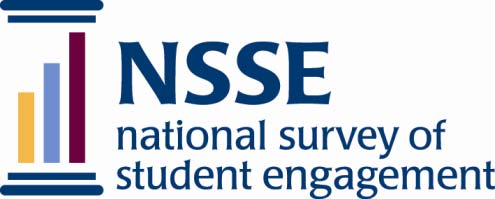Tips for NSS(E) Survey Administration

 The National Survey of Student Engagement (NSSE) is the North American equivalent of the National Student Survey (NSS). Useful NSSE resources which might be adapted for NSS purposes include Tips for Your NSSE Survey Administration; indeed, they might end up looking like this for the NSS:
The National Survey of Student Engagement (NSSE) is the North American equivalent of the National Student Survey (NSS). Useful NSSE resources which might be adapted for NSS purposes include Tips for Your NSSE Survey Administration; indeed, they might end up looking like this for the NSS:
- know your students: in order to encourage student participation you must know your students. Thus, having a plan of action to address the interests of all students, or indeed targetted groups of students, could positively influence your response rates. In fact, it might also be useful to drill down into previous data sets to see when students typically respond to the survey and/or in response to which actions/communications from staff and/or student representatives, Ipsos MORI, etc.
- involve your School/Departmental staff (as well as the University’s structures and support): institutions such as ours will cite the direct involvement of School/Departmental staff (e.g. Dean/Head, Programme Directors, Personal Tutors, Operations Managers, academic and/or academic-related staff advocating completion of the NSS survey, etc.) as key features of their promotional efforts. That being said, staff should also be encouraged to mention the NSS throughout the student lifecycle (from admissions and induction/returners events all the way through to graduation and beyond), but particularly to finalists. Structures such as Staff-Student Liaison Committee are vital, and not just when you are asking students to complete the survey, but also when evaluating the previous sets of data and reporting back on them. Ultimately, having staff members outline the value placed on the NSS by this institution will help our students to see that the NSS is a very important instrument worth completing.
- incorporate technology: using technology effectively can positively influence response rates, so colleagues should already be collaborating closely with institutional technology staff (e.g. the E-learning Officers in the E-learning Team) as a part of promotional efforts. Indeed, institutions across the country, as well as various parts of this University, are already utilising creative and cost effective ways to incorporate technology into their NSS efforts, including using entry to the NSS survey as the background screen on computer lab desktops, readily accessible links through Learn and the Student Portal – my.Lboro, as part of degree programme management (e.g. PowerPoint slides at the beginning of appropriate Final Year lectures), electronic newsletters and bulletin boards such as this Teaching and Learning Blog, etc.
- offer incentives: compared to the NSSE, this is even more tricky for the NSS, though research does suggest the effectiveness of incentives when it comes to encouraging student populations to take part. When does offering a small token for participation become something more negative and open to misinterpretation? Suggestions regarding this (i.e. incentives which work but which are not open to misinterpretation) would be very welcome!
- include students and student representatives: it may seem obvious, but it is interesting that this is number five in the original NSSE list rather than first. Clearly, involving students in promotional efforts is essential, which is why it is recommended that we work in conjunction with Loughborough Students’ Union (LSU) and students in our Schools/Departments and on our Programmes – i.e. ranging from the LSU executive to programme presidents to representatives for individual programme cohorts. Thus, we should be collaborating with our students and their representatives in our promotional efforts, i.e. through a variety of processes which can involve them in marketing, advertising, their various media (e.g. Label), etc., so that ultimately as many as finalists as possible see the importance of undertaking the NSS survey.
- use social media: using social media to promote the NSS could prove to be invaluable, it is just hard to determine where to draw the line regarding when and where staff might use it when interacting with students. An overwhelming majority of our students are using social networking sites on a regular basis, so the question for us is whether we and/or LSU should be using Facebook, Twitter, etc., to update students throughout the entire NSS process, i.e. as part of a promotion, completion, evaluation, and action cycle.
- disseminate results widely to stimulate action: which brings us to the last point. Although there are limits to the ways in which the NSS quantitative and qualitative data can be used (e.g. promotional advertising), we should be using the findings to inform institutional and School/Departmental priorities. This blog is just one of example of a creative way to share effective practice on this issue, but more contributions regarding this whole area would be very welcome!
source: adapted from “Tips for Your NSSE Survey Administration”, National Survey of Student Engagement, http://nsse.iub.edu/pdf/Tips%20for%20Your%20NSSE%20Survey%20Administration.pdf [20 February 2012]. Further information regarding the NSSE is readily available online, as are more details regarding the NSS.